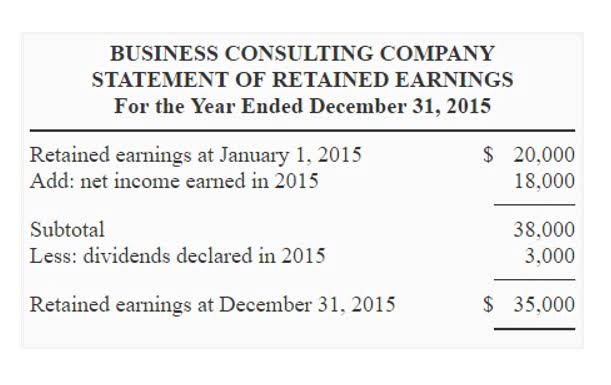
With deep expertise in nonprofits, Tejas Rane began his journey at Donorbox, gaining respect for charities’ global impacts. His writings, a fusion of extensive knowledge and marketing acumen, spotlight and celebrate the essential work of nonprofits, inspiring action within the philanthropic realm. Founded in 1938, the organization has been a leader in the fight against birth defects, premature birth, and infant mortality. The March of Dimes funds research, advocates for policies that support maternal and infant health and provides education and support to families. Wishes range from meeting a favorite celebrity or athlete to going on a dream vacation, and the foundation works to make each wish come true in a personalized and meaningful way. The foundation relies on donations and volunteers to support its mission, and their work has brought joy and hope to countless children and their families in difficult times.
Reasons to Donate Stock vs. Cash

It’s also easier to begin pursuing and accepting gifts of stock than you might initially assume if it’s a new undertaking for your nonprofit. When you donate shares of stock to charity, you’ll be required to fill out IRS Form 8283 when you file your income tax return. When you donate stock to charity, it’s possible for both you and the charity to avoid any capital gains on the stock. Third-party services, like DonateStock, can also initiate the stock donation on your behalf, though this may result in processing fees for the receiving nonprofit. If you’ve got a hefty investment portfolio flush with gains from the past couple of years, a stock donation may help you donate much more efficiently. This is especially true if you’re planning to sell off shares to fund your donation.

Dedicated Support
This information is still important to share, but by not leading with it, the organization reduces the chances that a new donor will unknowingly give anonymously. The third option provides donors with additional resources that explain the benefits of donating stock. Once a donor clicks through to begin a stock donation, they’re taken to a secure form that collects the most important information. This includes their name, name of broker, securities to be transferred, and the date of the donation. In order to preserve the tax benefits of stock gifts, the ministry receiving the gift must receive the actual stock, not just the cash realized from the sale of the stock.

Start Accepting Stock Donations Today!
- To make that request, complete the short form here and an Engiven representative will contact you if we are able to help facilitate a donation to that organization.
- Infinite Giving is one of the only technology platforms that includes opening and hosting a brokerage account.
- Giving stock instead of cash as a charitable donation can greatly benefit the donor as well as the recipient.
- Though that may have been true at one time, it’s no longer the case today.
In addition to using a donor-advised fund, there are other methods of donating stocks to charity. If the contra asset account stock exists as a physical certificate, you must endorse it by signing it in the presence of a guarantor, usually a bank or broker. There can also be a form on the back of the stock that requires filling out.
- With more than 20 years of business development experience, Andrea is passionate about start up business and an advocate for social impact.
- No longer do you have to share your brokerage information with strangers to accept stock donations.
- People often think about donating cash to charity, but nonprofits can also accept donations in other forms.
- This is a great opportunity to thank them again and assure them that their gift went through successfully.
- Anyone with stock that has appreciated in value that they’ve held longer than one year should consider stock donations.
For a more detailed look at each of these steps and a real-life example of the donor-facing stock giving process, explore the FreeWill guide to accepting gifts of stock. Bankrate.com is an independent, advertising-supported publisher and comparison service. We are compensated in exchange for placement of sponsored products and services, or by you clicking on certain links posted on our site. Therefore, this compensation may impact how, where and in what order products appear within listing categories, except where prohibited how to accept stock donations by law for our mortgage, home equity and other home lending products. Other factors, such as our own proprietary website rules and whether a product is offered in your area or at your self-selected credit score range, can also impact how and where products appear on this site. While we strive to provide a wide range of offers, Bankrate does not include information about every financial or credit product or service.
- If not, perhaps donors have mentioned the possibility of giving stock, or you’ve heard about stock giving programs from peers in other organizations.
- To get the maximum tax benefit, an appreciated security must be held for at least a year before it’s donated to a charitable organization.
- The value of an itemized deduction for stock donated less than a year after purchase is limited to the donor’s cost basis.
- This system gives you real-time alerts when prospects initiate donations and full records of past and ongoing transactions.
- Donating appreciated stocks directly to nonprofits is a giving channel that is not often well understood or widely used.
- According to one study, nonprofits that received both cash and securities gifts were able to grow contributions over a five-year period at a rate five times greater than those that received only cash gifts.

Nonprofits that actively encourage and accept non-cash assets display revenue growth 66% higher than those that only accept gifts of cash. DonateStock Charitable enables ALL nonprofits to solicit and receive stock donations. Donating stock to charity has advantages for both the donor and the recipient. The donor can claim the full donation as a tax deduction, while the charity may not have to pay taxes if it’s tax-exempt. Many charities accept stock donations, but check with the organization you’re considering first. Finally, after completing this form, the donor is directed to a page that provides them with the DTC information they’ll need to give their broker in order to request the stock transfer.
About DonateStock
- In addition to accepting crypto and stock donations, Donorbox’s top-of-the-line giving forms are built with your organization and donors in mind.
- Accepting stock donations is easier than ever with Donorbox’s integration with The Giving Block.
- Read on to learn how stock donations help you connect with more donors.
- From there, the stock donation goes into the Wells Fargo account of Renaissance Charitable Donor Advised Fund.
- Fortunately, while traditional investment advisors often don’t send donation receipts at all, Infinite Giving automatically sends them for you.
- There can also be a form on the back of the stock that requires filling out.
As nonprofits vary in size, this process will come down to what makes the most sense for your organization and who will have the bandwidth to steward and follow up with donors. IRS compliant contribution receipts are sent to the email address provided by the donor as soon as the gift of stock is received to the account specified in the stock transfer DTS Instructions. Contributions are recorded and contribution receipts are dated as of the date the gift of stock is received. If you entered an invalid email address or do not receive a contribution receipt, please email us at Contribute cash, stocks, mutual https://www.bookstime.com/ funds, and more to qualify for a tax deduction and potentially reduce capital gains. With Jotform Donation Apps, you can create a custom app for donations without any coding skills — and for no additional fee.

Step 1: Set Up a Nonprofit Brokerage Account
Designed assets to help you solicit and accept charitable stock donations. Noncash contributions other than capital gain property made to an organization not included in the qualifying list or “for the use of” a qualifying organization is subject to a 30% limit of your AGI. This limit may be further lowered if 50% of your AGI minus all your contributions to 50% limit organizations is lesser of the 30% limit. Another exception pertains to noncash contributions of capital gain property. A 30% limit of AGI applies to noncash contributions of capital gain property if you figure your deduction using fair market value without reducing for appreciation.


